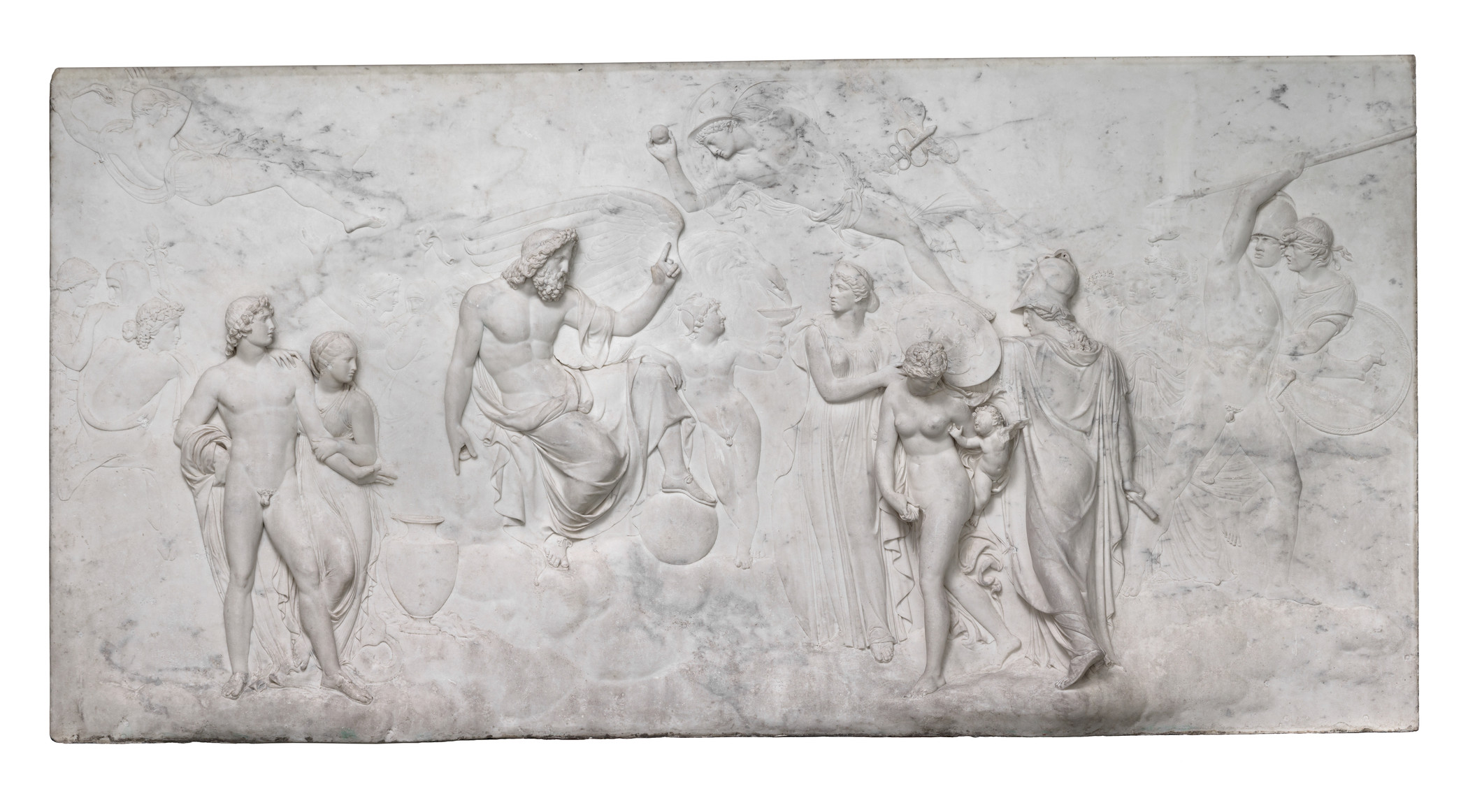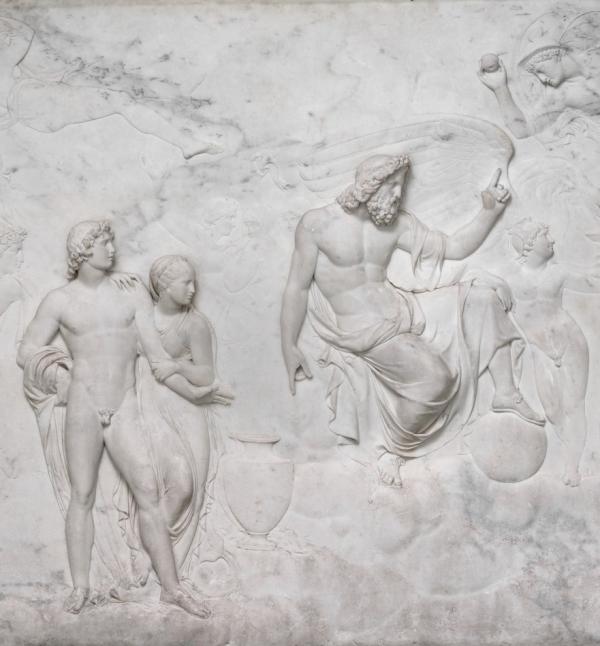As LACMA prepares for the 2026 public opening of the new David Geffen Galleries, the future home of the museum’s permanent collection spanning a breadth of eras and cultures, we’re sharing 50 iconic artworks that will be on view in the building over the next 50 weeks in the series 50 Works 50 Weeks.
Perhaps the most important British Neoclassical relief in the United States, Judgment of Jupiter was carved by virtuoso sculptor John Deare. He was he youngest artist to win the Royal Academy's Gold Medal, in 1780, and was commissioned by the Academy to make this relief for an exhibition in 1787. It captures a moment of divine drama with remarkable energy and precision.

Deare's scene is from Homer's Iliad, a text that had regained tremendous popularity in the 18th century due to contemporaneous archaeological discoveries. Here, Jupiter sits among the gods at the wedding of Peleus and Thetis (who are seen at the left of the composition). According to Homer's text, all gods are invited except Eris, the goddess of discord, who tosses a golden apple inscribed "to the fairest" among the guests as payback for the slight. Minerva, Juno, and Venus each claim it, but Jupiter, wisely refusing to pick among them, hands the apple to his messenger, Mercury (seen flying above the scene), who is instructed to give the fruit—and the thankless task of choosing a goddess—to the mortal prince Paris. Paris's decision will ultimately lead to the Trojan War, here evoked by Mars, god of war (shown at the far right).
Deare’s mastery of the relief technique gives the scene a remarkable sense of depth and vitality. His carving varies from nearly flat background figures to others almost completely in the round, creating the illusion of three-dimensional space. In all, his masterful technique and precise composition embodies the idealistic forms and moralizing Greco-Roman narratives that are the quintessential characteristics of Neoclassical art.



